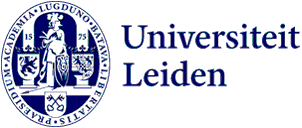
Research offers surprising insights into historical crime in The Hague
Theft, prostitution, fortune-telling or murder. Historian Manon van der Heijden and a group of students are researching court records from The Hague from 1600 to 1800. They are tracing crimes and offenders and shedding new light on The Hague’s Gevangenpoort (or Prison Gate). Among their many discoveries is the high number of women offenders.
Gevangenpoort served for centuries as a prison and court building for the Court of Holland. Suspects were imprisoned there, just a stone’s throw away from the Hofvijver lake, as they awaited sentence. Nowadays this medieval gatehouse is a museum.
Van der Heijden discovered that the crime history of the Gevangenpoort had not been researched in any depth. Since September, she and a team of student assistants have been researching court records from early archives in The Hague. She selected four students who are good at reading old manuscripts, a course she teaches in the History programme. Their main research questions are: What crimes were committed? Who committed them? And what were the punishments? The research is funded by the Hague Historical Museum Foundation and the Prison Gate Museum.
‘A horse thief was branded with a horseshoe’
Types of crime
‘We are discovering fascinating information and stories’, says Van der Heijden. ‘For years it was thought that Gevangenpoort was largely a prison for the administrative elite but that is due for a rethink. We also found plenty of normal, poor suspects in the records.’
Students Martijn Treur, Maartje van Dijk, Sam Peters and Twan Bosman are each researching a period between 1600 and 1800 and their first findings are already well worth the effort. They show, for instance, that large numbers of women were prosecuted in the 17th century, in some periods more than men even. Women were mainly arrested for begging and prostitution and sometimes for fortune-telling, theft or murder. Another finding is how international The Hague already was. ‘Many of those sentenced were migrants from England, Scotland and Germany’, says Sam Peters.
-

The Prison Gate is a museum nowadays. Photo: Velvet -

Execution of Reinier van Oldebarnevelt in 1623 with Gevangenpoort on the right. This was not just for the administrative elite. Print: Claes Jansz. Visscher - Rijksmuseum Amsterdam -

Excerpt from a court record: Trijntje Wijbrants’ verdict in 1648. A good knowledge of old handwriting is essential -

• Left, the Groene Zoodje scaffold and right, the Gevangenpoort. Painting by Gerrit Berckheyde, ca. 1690
Harsh punishments
The court records tell us more about the frequent use of torture to elicit confessions. The punishments imposed were extremely cruel too. They included years of banishment from the city, corporal punishment and the harshest sentence of all: the death penalty. Oddly enough, suicide was also a punishable offence with perpetrators being posthumously hanged from the gallows.
Master’s student Martijn Treur is looking into the earliest period, from 1629 to 1649. What stands out for him are the symbolic punishments. ‘What they did wrong is reflected in the punishment. A horse thief, for example, being branded with a horseshoe.’ Van der Heijden gives another example: unmarried mothers being put on the scaffold with a doll in their arms. The other students have found unusual punishments too. These include the ‘schandhuik’, a form of pillory in which offenders had to wear a heavy wooden ‘cloak’ with an iron collar.
‘The punishment for prostitution was severe in The Hague’
Comparison with other cities
Van der Heijden previously researched the history of crime in Leiden, Amsterdam and Rotterdam as well as cities in Germany, Italy and France. What strikes her about The Hague? ‘The number of women offenders is quite high in other cities too but the high numbers in The Hague are exceptional.’
The team has only just started the research so although they do not want to jump to conclusions, they do have their suspicions. ‘The punishment for prostitution was severe in The Hague’, says Peters. ‘On some days many women who were sentenced came from the same house because there had been a raid.’
‘In a real trading city like Amsterdam, the city administration was more lenient at times and the city was known for its red-light districts’, says Van der Heijden. ‘As a city of politics and governance, The Hague was different in character.’
Drawings of torture devices
For the students, this research is a real learning experience. ‘The history definitely comes alive’, says Maartje van Dijk. And yes, it is brutal: alongside texts they have also found drawings of gallows and other torture devices.
Student Twan Bosman says learning to research old manuscripts is a bonus. And the research is not only interesting for historians. Rijksmuseum De Gevangenpoort wants to use the results in a podcast and an exhibition. But this will take many more hours in the archives because they think they will research interrogation records too. ‘Hardly any historians in the Netherlands use these kinds of records’, says Van der Heijden. ‘Which is a shame because they really do bring this history – as gut-wrenching as it often is – to life.’
Text: Linda van Putten
